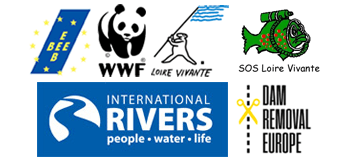Vehicle tyres and synthetic clothes are two of the leading causes of household microplastic pollution (FoE)
Vehicle tyres and synthetic clothes are two of the leading causes of household microplastic pollution, a report from Friends of the Earth UK has found.
The UK study estimated that just four main sources delivered between 9,000 and 32,000 tonnes of microplastics into waterways every year.
The two worst causes were tyre abrasion and the washing of synthetic clothes, such as fleeces.
When people wash clothes made from synthetic material it passes through the sewage system because there are no systems to recover these tiny plastic fibres. They eventually end up in rivers or the marine environment. In parts of Europe it is estimated that two-thirds of clothing are made from synthetic materials.
Recent studies have shown that plastic ends up in the human body.
This study, which was carried out by Eunomia for Friends of the Earth UK, reveals that household plastic waste is roughly on par with large plastic waste, such as bottles, as around 26,000 tonnes of that also enters UK waterways each year.
The four main sources of microplastic waste, according to the report which was reported on today in the Guardian, were as follows:
- Vehicle tyres: plastic microfibers are created when abrasion on the road surface creates tiny fragments which wash into streams and rivers;
- Clothing: the washing of synthetic clothing separates tiny specs of plastic which make their way through the water treatment system;
- Plastic pellets used to manufacture plastic items: These tiny cast off from manifactured items make their way to waterways;
- Paints on buildings and road markings: Weather and flake-off results in tonnes of these tiny fragments ending up in surface water every year.
Earlier this year Eunomia also produced a report for the European Commission on microplastics, particularly those created by wear and tear.
They concluded that the largest reductions could be made at source. They called for new measures to limit the release of manufacturing pellets, to remove the worst performing tyres from the market and to analyse the synthetic clothing that emits the most microfibers when washed and take measures to limit their access to the market.

 ERN is the official WWF Freshwater Partner in France and cooperates with WWF Switzerland, Austria, Netherlands and others
ERN is the official WWF Freshwater Partner in France and cooperates with WWF Switzerland, Austria, Netherlands and others

Leave a Reply
Want to join the discussion?Feel free to contribute!